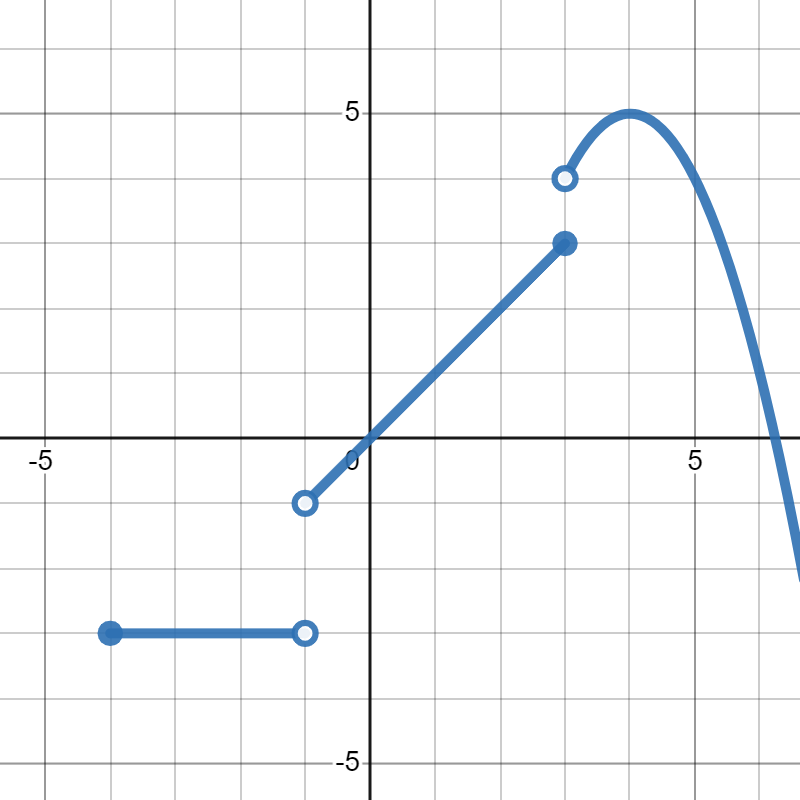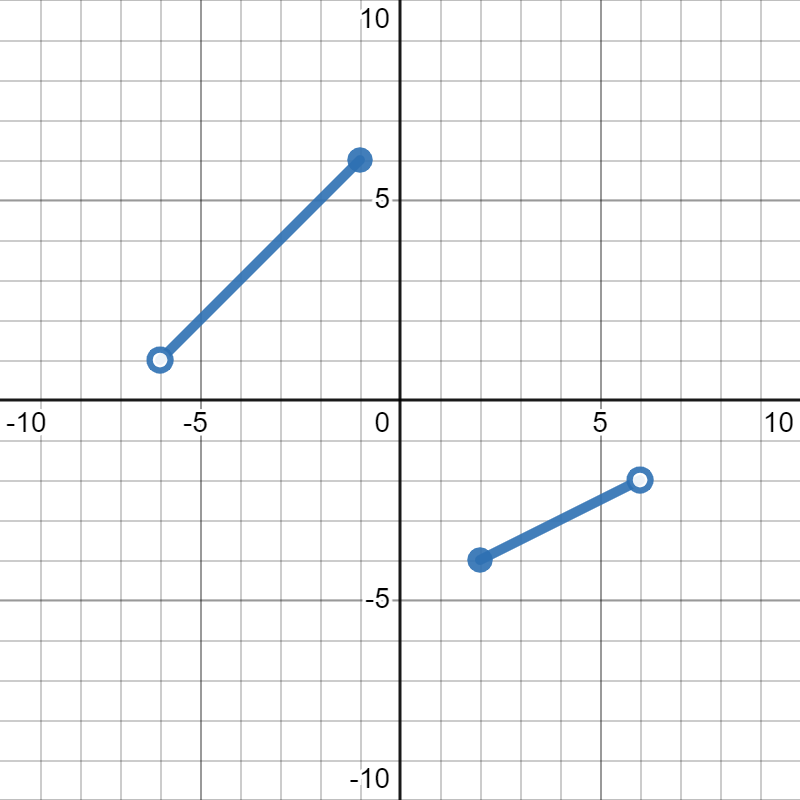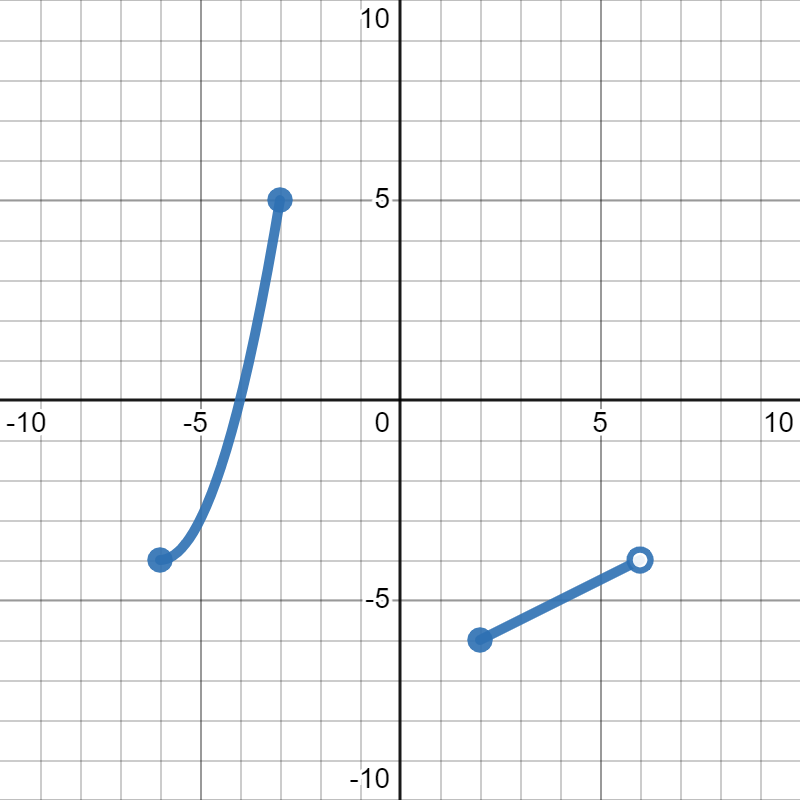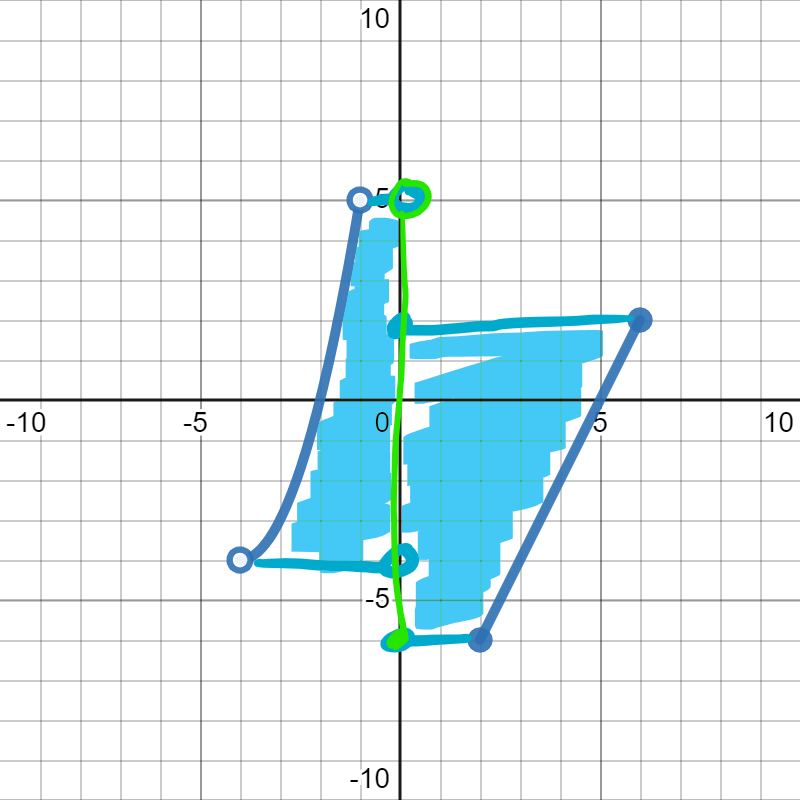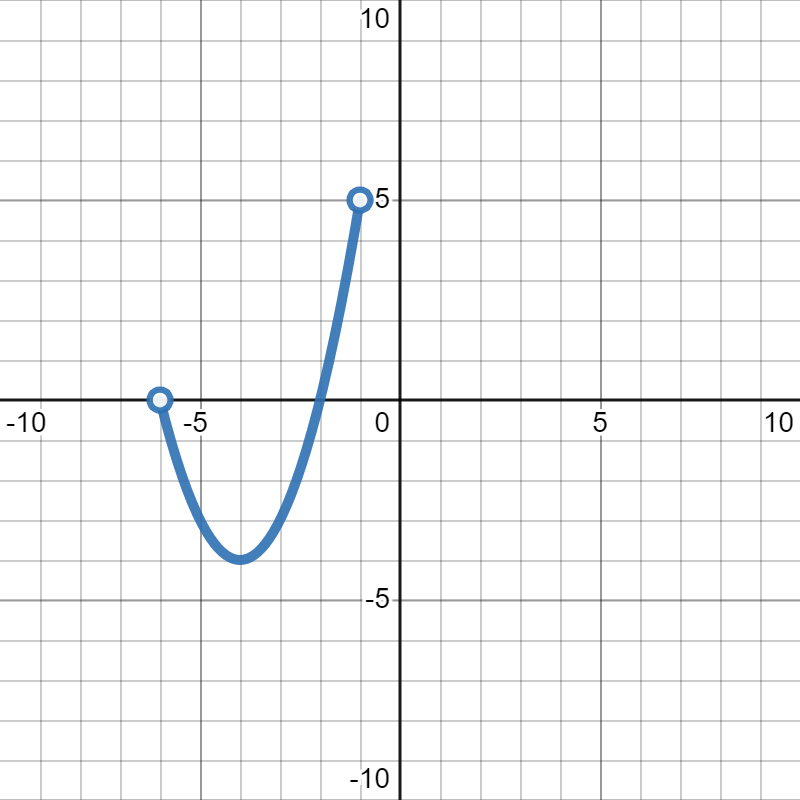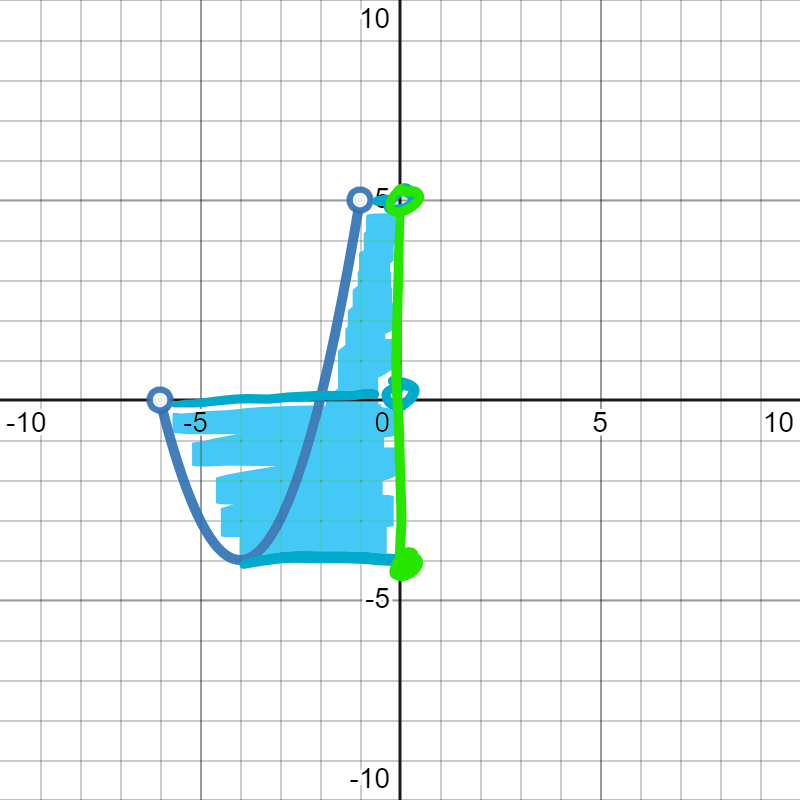First, we look for all of the
\(y\)-values that get covered by the graph. We see that the part on the left starts at
\(y=1\) and ends at
\(y=6\text{,}\) so that will be our first interval. Since the dot at
\((-6,1)\) is an open dot, it is not included in the graph, so we need a round parentheses
\((\) at the
\(y=1\) endpoint of our interval notation. Since the dot at
\((-1,6)\) is a closed dot, it is included in the graph, so we need a square bracket
\(]\) at the
\(y=6\) end of our interval, giving us
\((1,6]\) for our first piece.
For the piece on the right, we see that the graph goes from
\(y=-4\) to
\(y=-2\text{.}\) Since the endpoint at
\((2,-4)\) is closed, it gets a square bracket ]. The endpoint at
\((6,-2)\) is open, so it gets a round parentheses ). This gives us
\([-4,-2)\) for our other interval.
To put the two intervals together, we use a union. So, our final answer is
\([-4,-2)\cup(1,6]\)
